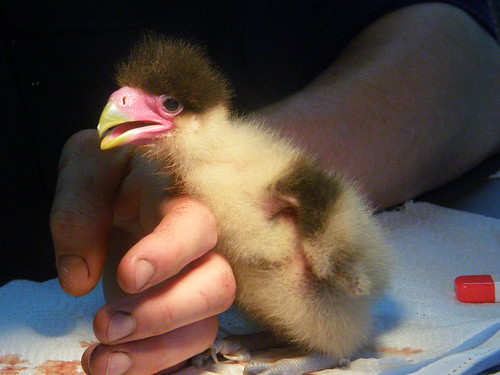Ten cool Crested Caracara facts
Crested Caracaras are distinctive birds of prey that live in parts of North, Central, and South America. Here are some cool facts about the Crested Caracara:
1) Crested Caracaras are fine at flying, but they can often be found walking around on the ground. Their long legs also make them strong runners.
2) While mostly quiet, the Crested Caracara has a distinctive social vocalization which is described as a rattle. The cackling, rattling sound is produced while the bird throws its head back in a move called the head-throwback display.
3) Caracaras are members of the falcon family.
4) Unlike many other falcon species, caracaras are not cavity nesters. They build stick nests high up in trees.
5) Like vultures, Crested Caracaras eat a lot of carrion.
6) The diet of a Crested Caracara may also include insects foraged through vegetation or eggs from ground-nesting birds.
7) Crested Caracaras look very distinctive, with dark bodies, a white neck, and a dark shaggy cap.
8) Baby Crested Caracaras have their dark cap from the time they hatch.

feeding time for the hungry baby caracara by belgianchocolate [Creative Commons]
9) The national bird of Mexico is the Crested Caracara (an honor sometimes shared with the Golden Eagle).
10) To intimidate nest intruders, Crested Caracaras may clack their beaks, or break off dry twigs to make a snapping sound. If you can't get enough of Crested Caracaras, you're in luck! This unique species is one of our newest Birdorable birds! Check out our fun collection of cute Crested Caracara apparel and gifts.






Comments
Leave a comment
Thank you!